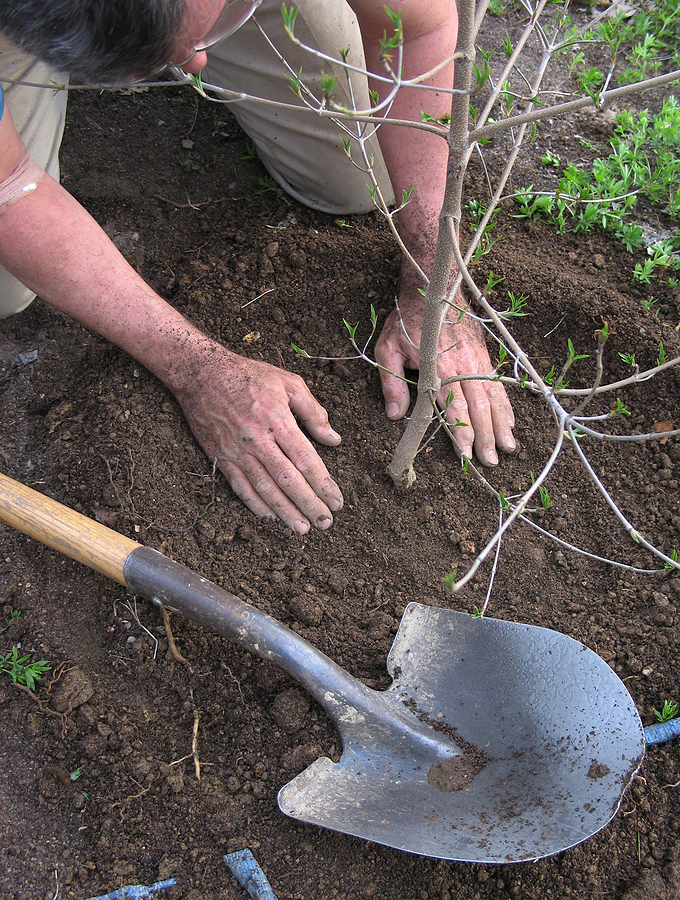
Fall is a great time to install a new landscape and plant trees and shrubs to increase their transplanting success.
Planting while dormant
Ornamental trees begin to go dormant as temperatures cool in the fall. They typically are dormant from the first freeze of the season until the temperatures start to warm in the spring. A general rule of thumb is Thanksgiving to Valentine’s Day. While dormant, the tree is not actively growing, so its need for water and nutrients naturally decreases. Planting while your tree is dormant greatly reduces the risk of transplant shock. Dormant trees can withstand winter conditions but you should still take care in planting them correctly to avoid stress and shock once spring returns.
Diseases and Pests are also dormant in the winter. This significantly reduces the susceptibility to your trees becoming under attack. Certain ornamental trees are best protected when applying dormant oil in the winter. Contact us for more information about keeping your trees safe from pathogens all through the year.
Winter Watering Needs
During winter, your trees’ need for water is greatly reduced compared to what it needs for foliage and flowers in the growing season. Trees do still need water in the winter in order to slowly adjust to their new surroundings and establish their root system. A common mistake is planting trees during a dry spell or prior to freezing temperatures. It’s always a good idea to water your new trees in at the time they are planted. Rain offers inconsistent moisture and new roots need consistency to start to establish roots. When the ground freezes, plants cannot take up water and so it’s important they had it available prior to a major drop in temperatures.
Planting depth and planting on a slope
The correct soil depth is always important when planting trees. Established trees can help protect your landscape from erosion, but if trees are planting on a steep slope in the winter, they can pose a landslide hazard. One technique is to build a terraced garden. The stonework will correct the slope issues and then your trees can be planted normally. As their root systems grow, they will strengthen the hill’s stability without the slope as a direct force against them.
You also need to take care to avoid planting the base of your tree too deep or too shallow. Soil should cover the entire root mass at the tree’s base and should not bury the trunk. A good rule of thumb is to emulate the depth of soil your tree had when planted in its pot.
Planting too high can expose roots, causing your new tree to dry out. Planting too low can submerge the base of your tree in soil or water, causing its roots to rot.
Planting in the right location the first time
Finding the right site for your tree is really important. Frequently transplanting can cause stress and make your tree more susceptible to problems later. Some things to look for when choosing the site for your tree:
Consider its mature height and the potential to obscure your view. Do not plant too close to your fences, home, or garage. Consider the direction of the wind and plant your trees out of the wind’s path to prevent problems later. If there are light winds, staking during the winter can help a new tree from blowing over, but avoiding this issue in the long run is recommended by planting in the right spot the first time.
In the Northwest it’s safe to plant trees almost year round (as long as the ground is not frozen),
For your planting needs contact Frontier Landscaping Inc.
Frontier Tree Care provides emergency tree services if the need arises. Save our number this winter in case you have a tree emergency


